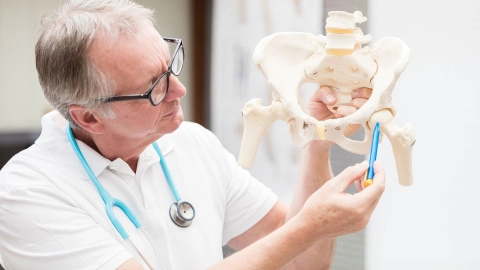ICD-Code M16.3: Other dysplastic coxarthrosis
You have arthrosis in your hip joint.
The two hip joints connect the pelvis to the thighbones (femurs). At each side of the pelvic bone there is a depression. This depression is also called the hip socket. The femoral head sits in the hip socket. The femoral head is the rounded, top end of the femur.
With arthrosis, the cartilage in the joint wears away. Cartilage covers the end of the bones that are connected to one another in the joint. Its smooth surface prevents the bones from rubbing against one another. With advancing age, the cartilage can wear away. This can happen more quickly if a joint is subjected to greater loads than usual.
You have a deformity in your hip joint. With this type of deformity the pelvis and the thigh bone are not properly aligned. The hip socket may also have an unusual shape. The deformity puts more pressure than usual on the hip joint. This can result in arthrosis.
Arthrosis can be accompanied by typical symptoms, such as pain in the joint. It may also no longer be possible to move the joint as usual.
Additional indicator
On medical documents, the ICD code is often appended by letters that indicate the diagnostic certainty or the affected side of the body.
- G: Confirmed diagnosis
- V: Tentative diagnosis
- Z: Condition after
- A: Excluded diagnosis
- L: Left
- R: Right
- B: Both sides
Further information
Source
Provided by the non-profit organization “Was hab’ ich?” gemeinnützige GmbH on behalf of the Federal Ministry of Health (BMG).



